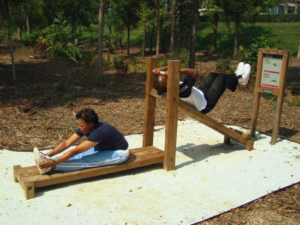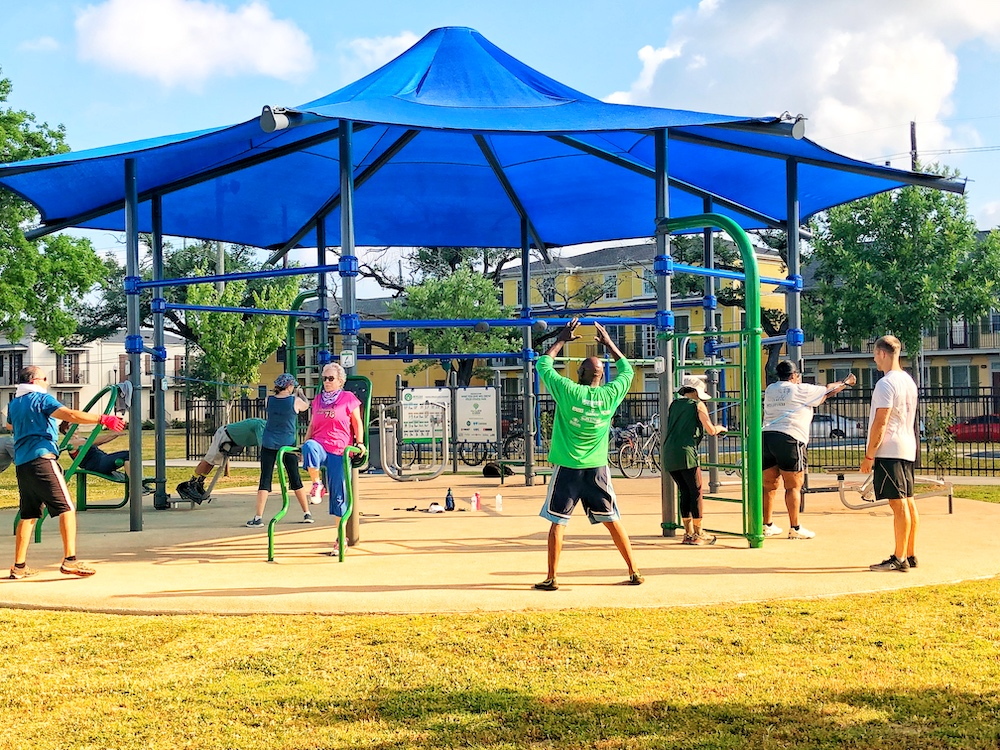
Outdoor exercise is gaining popularity, and for good reason. Training programs using outdoor fitness equipment can be kept simple, and routines can be flexible in order to accommodate a wide variety of fitness levels. Being outdoors is often perceived as “more fun” and may attract a wider range of users (Spears, 2017). From a financial perspective, outdoor fitness may be an affordable option when expensive gym memberships and classes are cost prohibitive. This can also benefit local trainers by allowing them to serve a broader spectrum of clients.
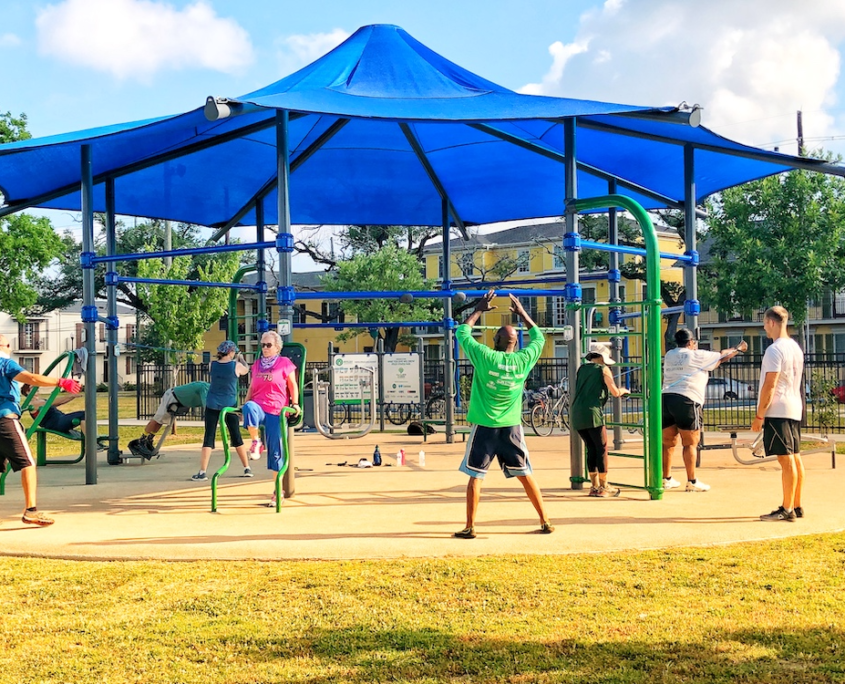
History
The benefits of nature to overall health and wellness is not a new idea. On the other hand, facilitating outdoor exercise using gym-like equipment is a relatively new concept. Fitness parks built for outdoor use are constructed of the same all-weather powder coated steel materials that are used for a typical children’s playground.
The concept of outdoor gyms has gained popularity in Asia and Europe over the past several decades. In the 1960s and 1970s, “fitness trails” that were built throughout the United States and Europe were often referred to as outdoor gyms (Randall et al. 2008). The fitness trail, as seen below, is quite different from the modern “Outdoor Fitness Park,” which clusters equipment together to resemble the conventional indoor exercise room.

Source: fittrail.com
Before hosting the 2008 Summer Olympic Games, China initiated a national fitness campaign, which committed over 20,000,000 square meters across the country to publicly accessible outdoor gyms (Olympic, 2008). Today, there are more than 600,000 pieces of outdoor equipment in China.
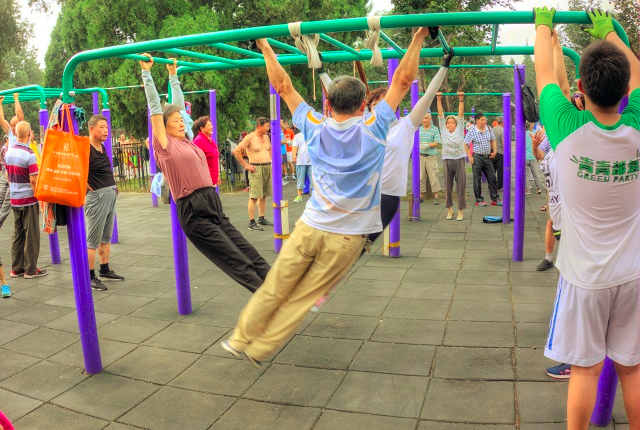
Source: https://thecityfix.com/blog/beijing-redefining-public-space-temple-heaven-mark-wessel/
The United Kingdom soon followed suit in 2012, recognizing that outdoor adult playground sites offered solutions to cost and accessibility obstacles, two common barriers to exercise for adults (Rise, 2012).
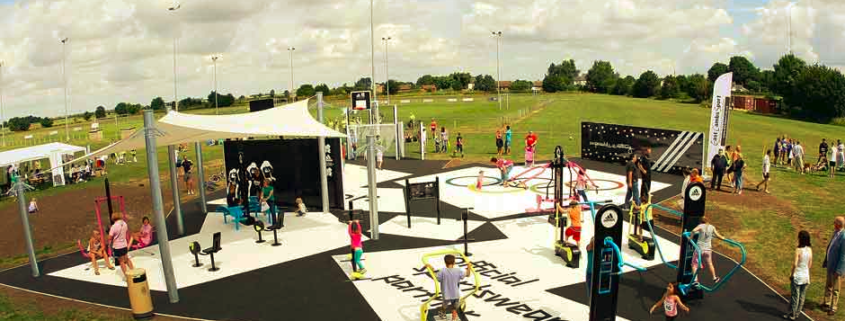
Source: https://www.tgogc.com/news-article/tgo-gyms-commercial-sponsorship-adidas
